
Every June, Xàbia is immersed in what is arguably the biggest party of the year, the Fogueres de Sant Joan, celebrations that not only honour Saint John but also have their roots in more ancient midsummer traditions. In 2016 we were asked by the Fogueres Commission to write an article based on our experiences and it appeared – in Castellano – in the official booklet for the 2016 edition of the fiesta. It proved to be a popular read with many people finding out how outsiders saw their grand fiesta. So we’ve decided to re-produce it – with a few edits and additions – to bring it up to date.
We come from a country where many ancient traditions have been largely lost in the mists of time. These days fiestas, if they can be called as such, are largely limited to a modest float parade and a travelling funfair in the municipal park for a week during the summer or the occasional village fete and beer festival. Old customs and pagan traditions might survive in the west and the north, the ancient Celtic countries, but they’ve largely disappeared in other parts of the country as secularism becomes more widespread. So, nothing would prepare us for what we would discover for a couple of weeks in June each year in Xàbia. And nothing would delight us more than getting involved with the Fogueres de Sant Joan.
We came to Xàbia keen to discover as much as possible about the town that would become our new home. And we were eager to delve into the world of the ubiquitous Spanish fiesta, something so alien to us but so essential to the identity of a nation which simply wouldn’t be what it is without it. There are over 15,000 fiestas throughout Spain and it is said that even if you attempted to experience one a day, you’d be hard pressed to see them all in your lifetime. However it would be nice to give it a try.
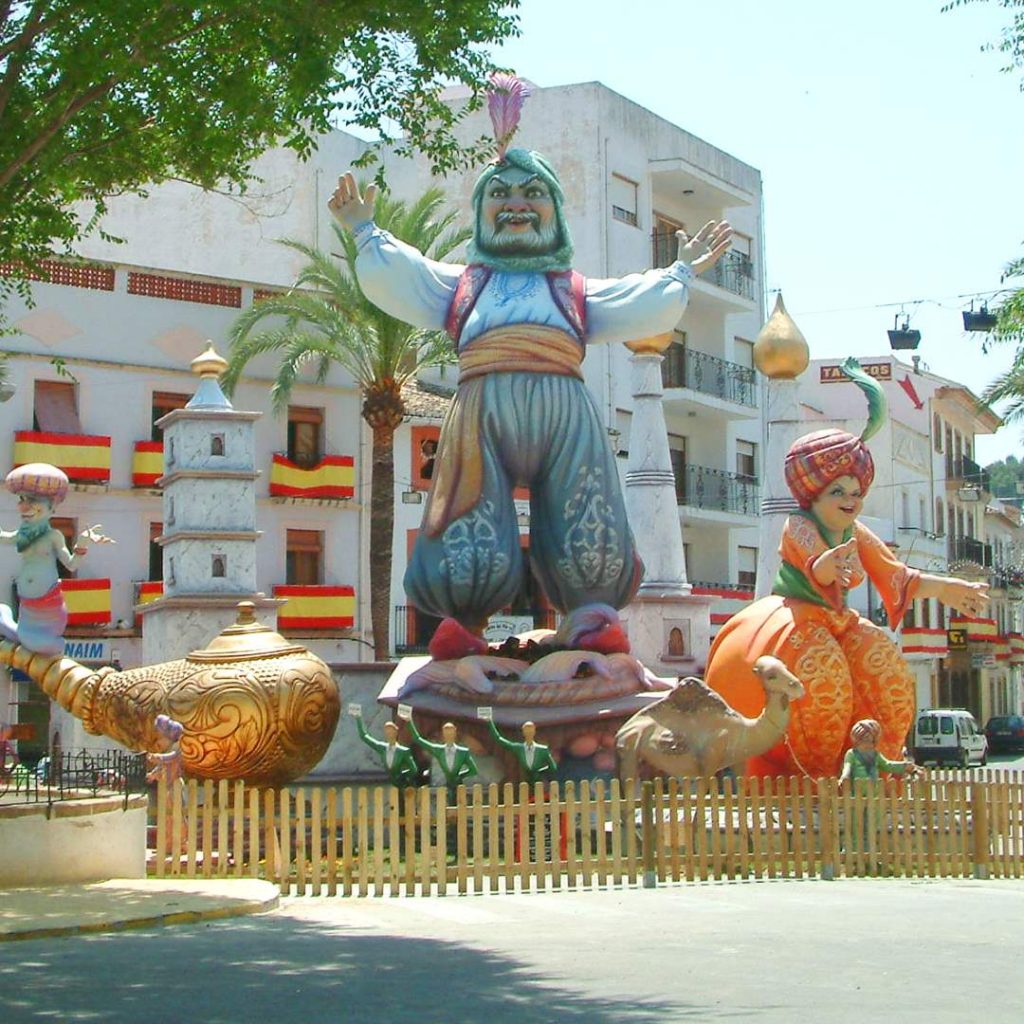
We were first aware of the fiestas of Sant Joan when we used to come to Xàbia for family holidays. We never got involved, we didn’t feel it was our place to do so. In fact, when we enquired at the tourist office for information about a parade, we were told in no uncertain terms: “It’s not for tourists!” We ignored the advice and watched the procession of ‘quintàs’ roll in various states of sobriety past the post office. It was enthralling. The video camera rolled, panning in all directions to capture the experience. We also caught the occasional bull-running and marvelled at the huge statues that were created in the Placeta del Convent. Occasionally we were woken in the early hours by the noise of music, even though we were staying in a holiday villa well outside the town, but we didn’t mind too much. We understood that it was fiesta and anyway we were on holiday so we could sleep as much as we wanted.
It was only once we had made Xàbia our new home that we started to try and understand what it is about Sant Joan. For most foreigners, it was – and perhaps still is – all about the fire-jumping, the stunning fireworks and the burning of the statue and for our first few years it remained just this for us.
And then, after living for some years across the other side of the bay, we moved to the town itself and our experience was totally transformed. It had to be. We were now living in the fiesta and there was no escape. The noise, the music, the smell. It was engaging and we were determined to become more involved and to stop standing on the sidelines looking in at all the fun. We soon began to understand more as new friends were made and old traditions explained. We got to know the characters of the fiesta, the officials, those hard-working men and women who make the whole thing possible. And we also discovered the ‘penyas’.
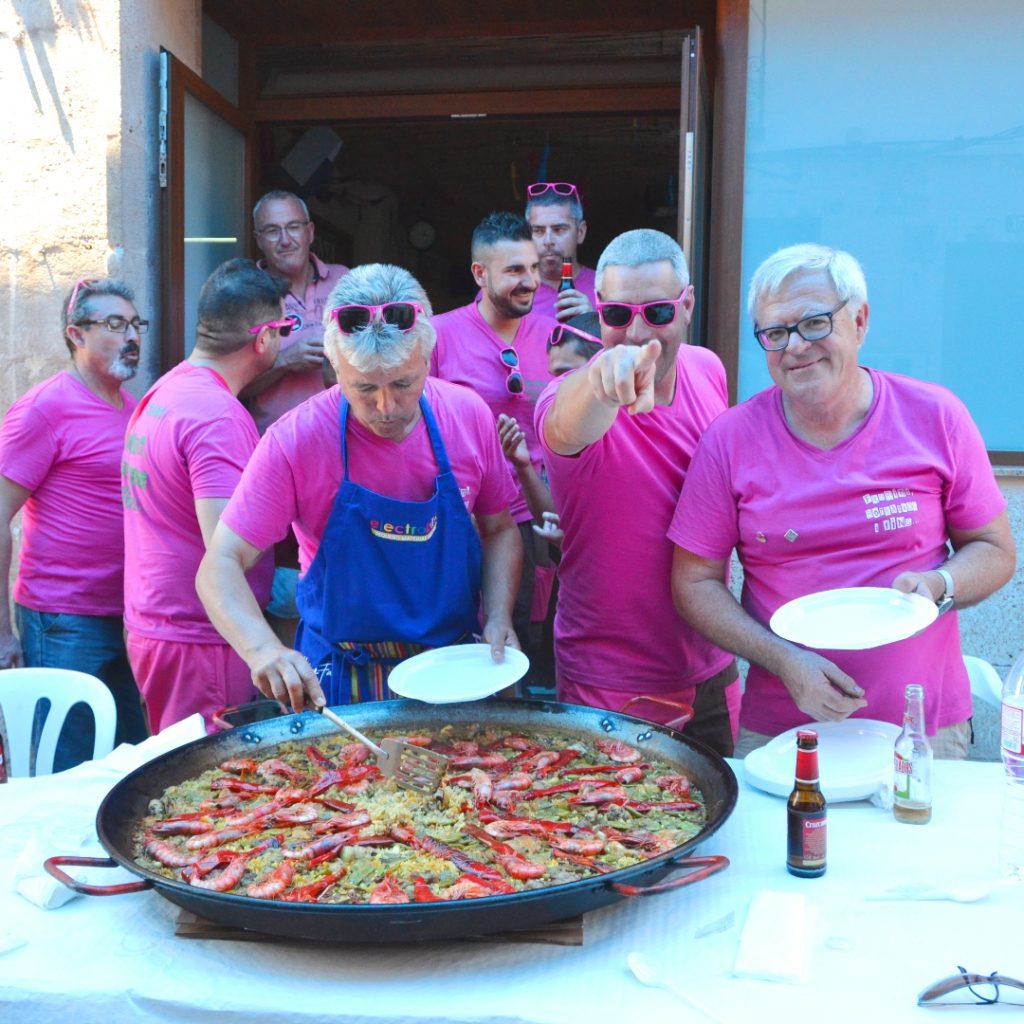
Oh! the penyas! So friendly. So responsible for so many hangovers! But I don’t think one could find more amicable groups of people. Many times we have been dragged not entirely unwillingly into a casal to enjoy a drink or some food with the penya. Languages might be different but the desire is the same: to forget the woes of the world just for a few moments and enjoy life. Even if it does mean stumbling home at sunrise! We experienced a different side of Spain that we thought we knew but didn’t entirely understand. We also experienced the dubious delight of ‘casalla‘, the ‘Agua de la Marina Alta‘, and shot of choice of the fiesta.
Our first impression of the Pregón, the official start of the fiesta which normally takes place on the evening of June 14th as the sun dips behind the horizon, reminded us of another of our passions: football. The penyas, in their team colours, would exchange friendly jibes and chants. The gathering crowd in the church square swayed together as it would do on the football terraces of yesteryear. A great cheer would herald the arrival of the “home team” – the quintà – the protagonists, those young people of Xàbia who would be coming of age during the year. There was no malice; it was all very good-natured.
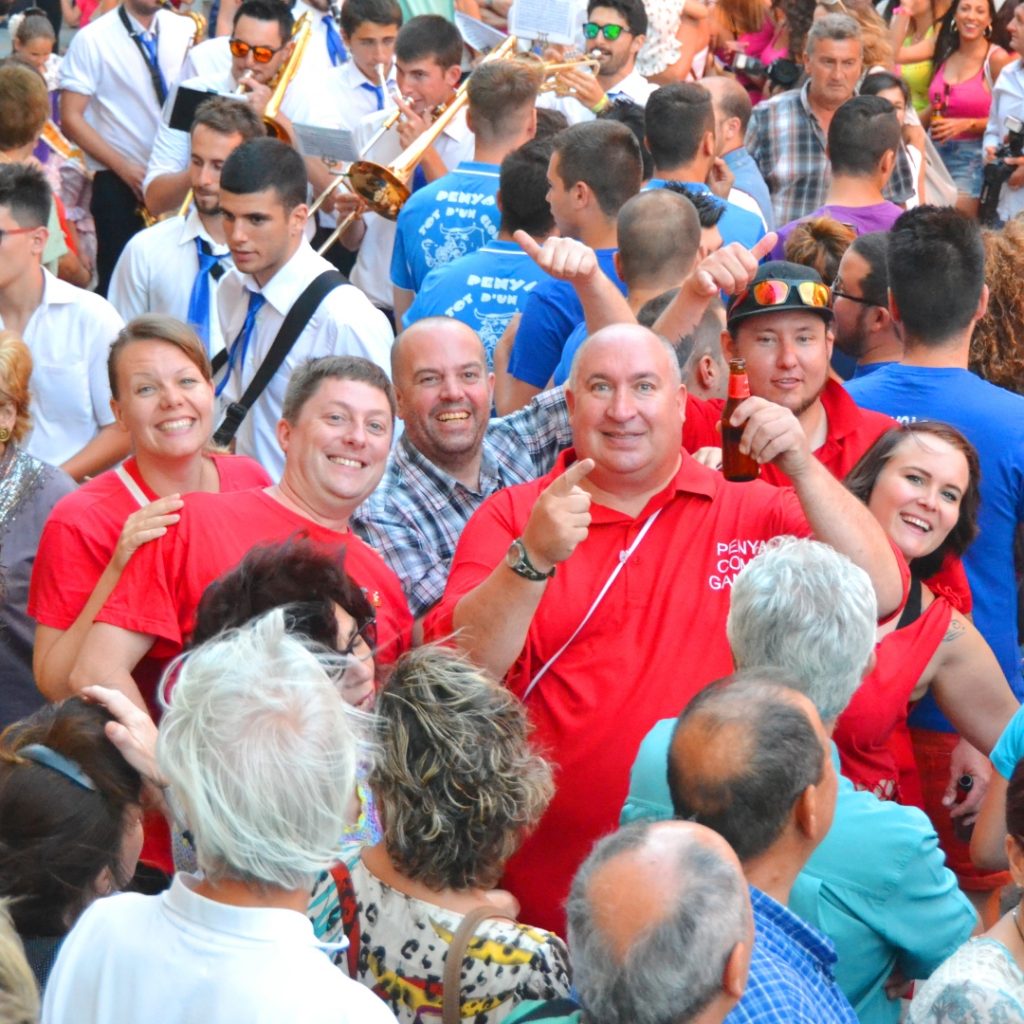
The music lifted spirits; it was hard not to get swept away with the atmosphere. So we didn’t stop ourselves. After the opening speeches from the Queen and Mayor which were greeted with a huge cheer, the band began to play and, clutching scraps of paper given out to the crowd, we tried to follow the words of the traditional songs of “Fogueres” and “Xàbia”. During the rousing chorus of the former, we felt ourselves lifted off the ground as the masses jumped to the beat. It was an infectious moment as fireworks filled the darkening skies and old friends hugged each other and exchanged a special look that said quite simply: “Let’s get this party started!”
Later that same evening, we experienced the ‘Cants de Sant Joan’, the traditional singing to the images of Sant Joan sitting in their niches in narrow streets in the historic centre. Hundreds squeezed into those streets and the noise and the bustle took us by surprise but pleasantly so. The ambiance was good-natured. People linked arms, sang and shared drinks. In the melee we spotted the mayor and a couple of councillors. No pretensions. Everyone together to honour the saint.
The procession moved slowly and noisily through the historic centre. The clock had long ticked past midnight but the party continued. At each stop the crowd sang their hearts: “Fogueres! Festejos que saben a miel!” until we reached the church square. The protagonists took to the steps and banter was exchanged between ‘quintos’ and the penyas below them before the band led the masses on the last stretch back to the main square. We were almost breathless. The energy. The enthusiasm. The camaraderie. Yes, we wanted more of this!
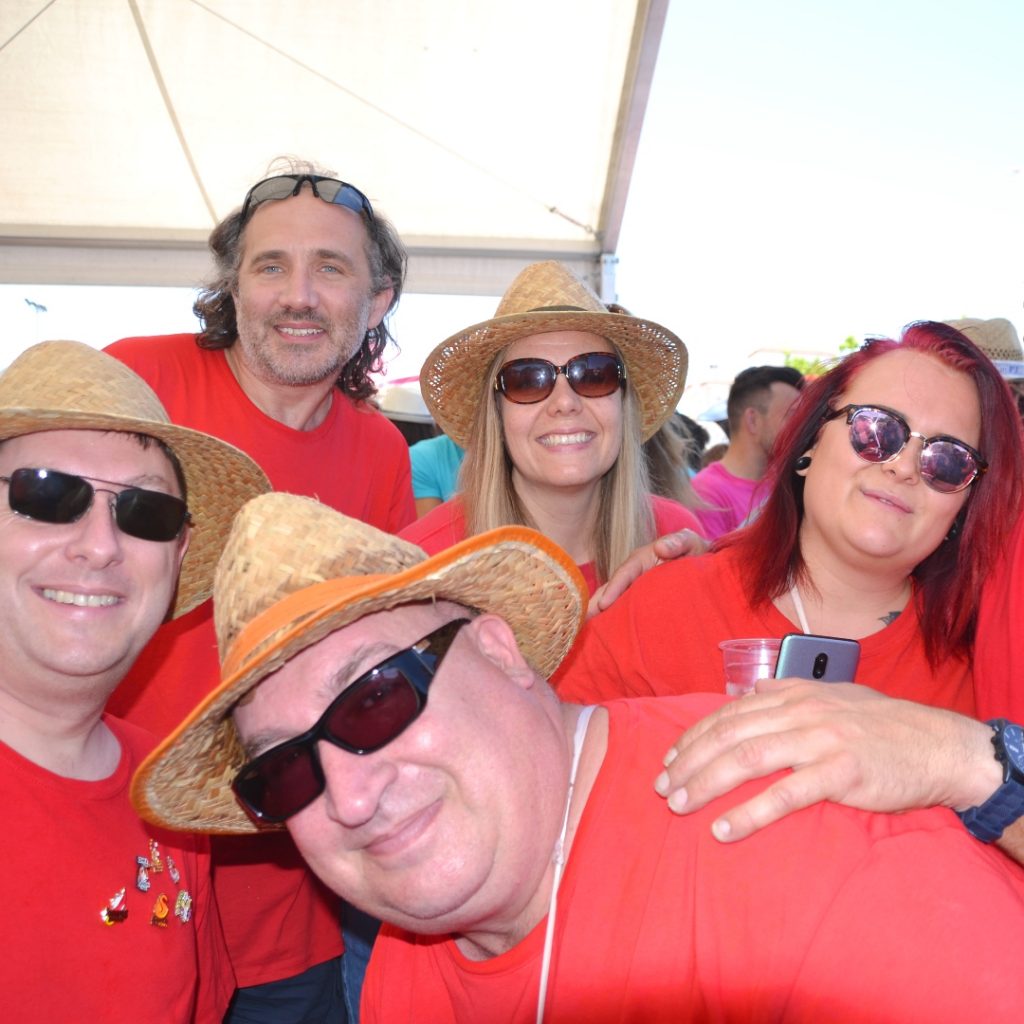
And throughout the next few days we watched and we learned and we gradually became more involved. We loved the concerts in the square; you’d pay through the nose to see live music every night. Some of the acts might not be to everyone’s taste but we knew that’s the whole point – that there’s something for everyone! Sometimes we found ourselves running between different areas of the town to catch something, just because we wanted to find out for ourselves about the music, the dancing, the traditions. Now and then we were dragged into another casal for another drink, another glass of this magical ‘casalla’. What fun!
And as for ‘Nit dels Focs’! Well, it’s almost indescribable but we have always tried our best! Fires in the streets? If that happened in the UK, it would mean that a riot had broken out! The searing heat of the fires on the hot summer evening, the rhythm of the drums encouraging those brave enough to do so to make the leap of faith through the flames, sometimes with friends, sometimes with strangers who would become friends. Let’s have a shot of casalla to celebrate afterwards! Six fires over which to leap whilst wearing the crown of flowers. And the final huge bonfire onto which to throw that crown and then stand back and let the ‘quintos’ take centre stage. The firefighters control the blaze but also cool down those watching for it is a hot night.
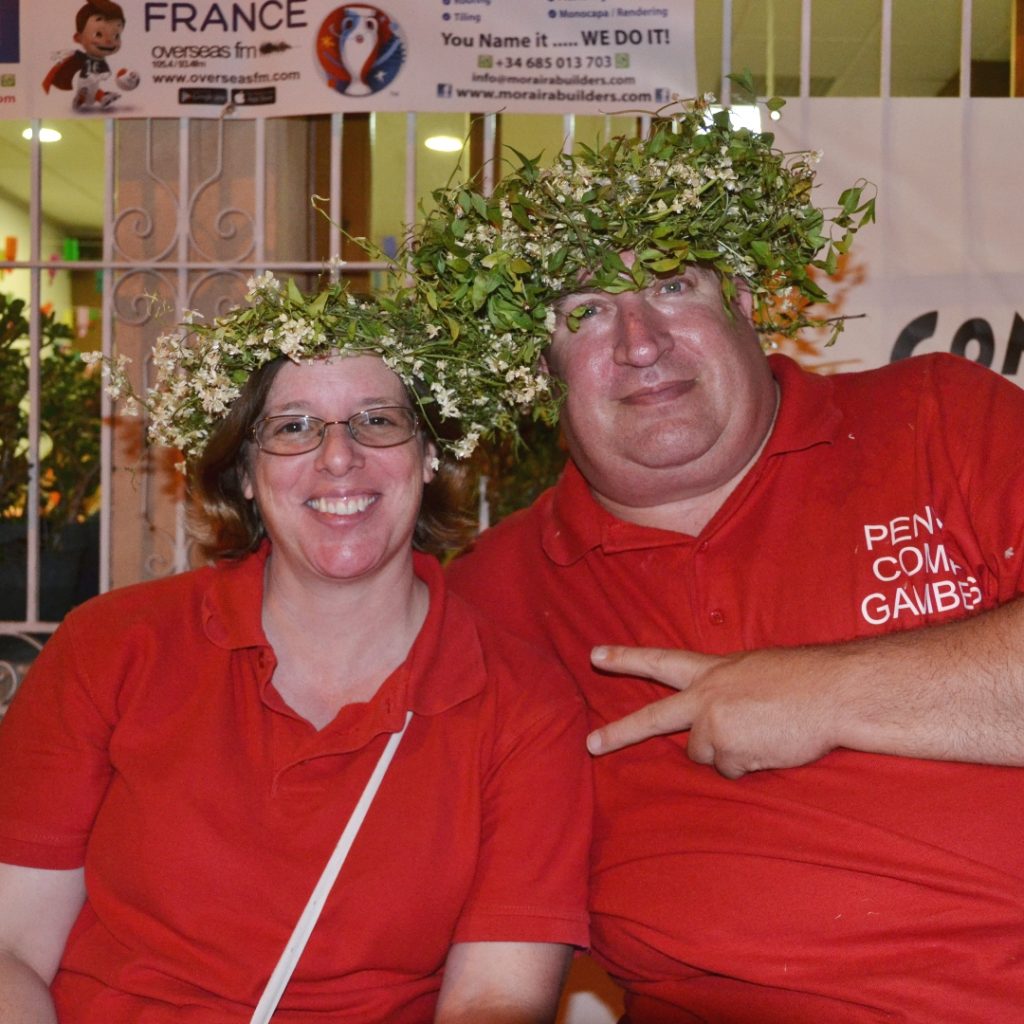
And it’s not over yet. Masked devils chase us around the streets with huge firecrackers spewing bright sparks from the end. A man on a bike emerged from a dark corner, his ride suddenly exploding into bright light as sparks flew in all directions as he rode through the crowd. What just passed behind me? Was that really an iron bull, its metal horns alight with bright flames? Uh-oh! The sky above has just burst into bright light, sparks dropping in a fierce waterfall through which we must pass! Watch out for that figure lurking in the shadows at the sides! Where? Oh there!! Run! And then we emerge in the main square, the clock ticking quickly towards 3am. One final act, the crowd jumping as one to the pounding drums; I swear I can always feel the ground below me bouncing under the sheer weight. And with a final explosion, it’s done. The band starts up and we push through until dawn.
And finally the emotion of the last night, the fireworks and the burning. As I said before, when we first arrived in Xàbia, this was what Sant Joan was to us. We couldn’t understand why people had tears in their eyes as the flames gorged on the statues. But now we do understand. Now we are the ones with a tear or two in our eyes. It’s the end of a magical time for Xàbia. Are they tears of sadness for the end of the party? Or tears of joy for having survived it? It doesn’t matter because now we understand the fiesta and what it means to the people of Xàbia.
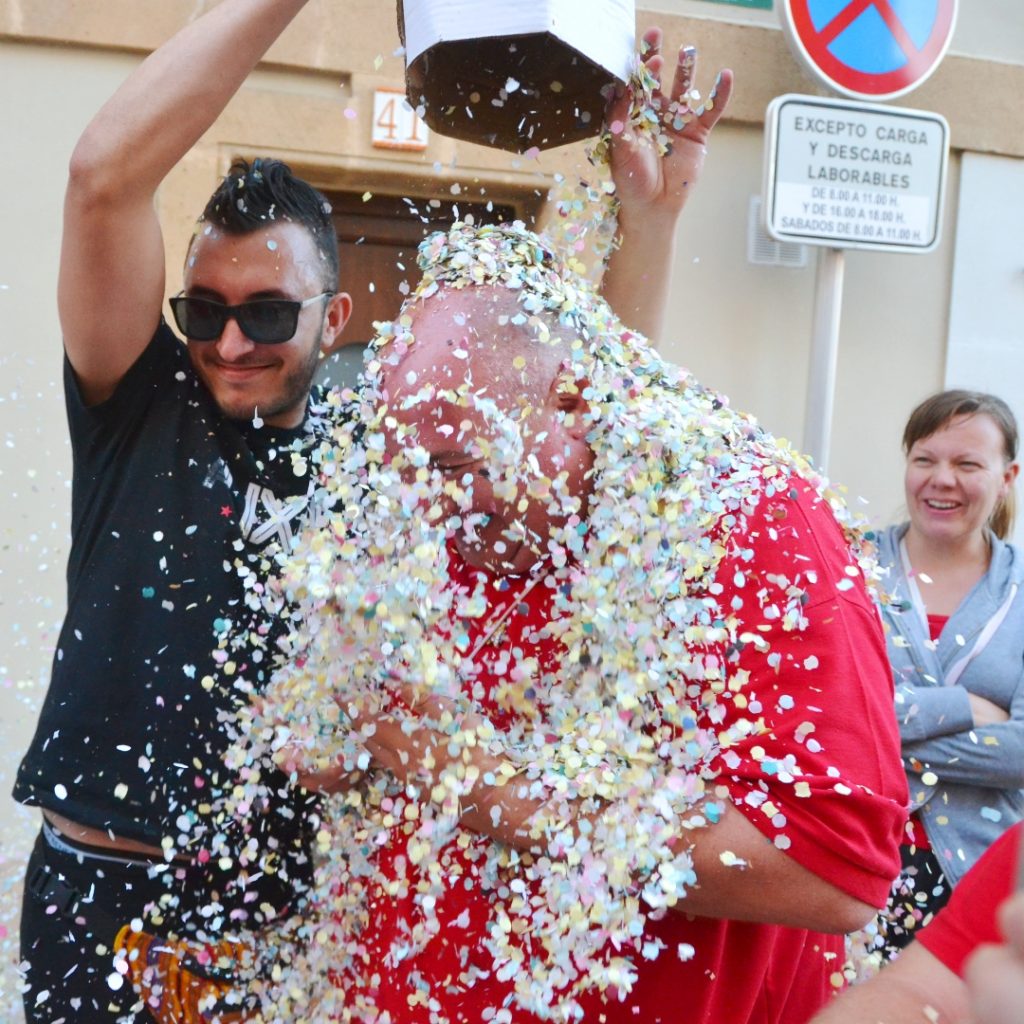
During Fogueres 2012, the idea of our own penya emerged. One evening whilst enjoying some live music in the main square, we resolved to create one. We knew we wouldn’t be the first; a ‘penya britanica’ had existed in the 90s but was no longer active. So we made our plans. But what to call ourselves? I called on the help of my Spanish students to develop something that best described the foreigner in Xàbia; they came up with the name “Com a Gambes Ens Posem i En Festas Ens Bufem“. They explained that it described how us ‘guiris’ go red raw in the heat, just like prawns do, and like to have few beers during the fiesta (and any other time, in fact).
We made some T-shirts, bright red with our logo loud and proud on the back, and revealed ourselves in 2013. The response was incredible and extremely positive. And what better way to integrate with the local community that by becoming involved in the biggest party of the year in town. After a shaky start, we have grown into a modest group of ‘foreigners’ who share a distinct love of Sant Joan – and we not only have British expats but also people from Sweden, Finland – and Madrid!
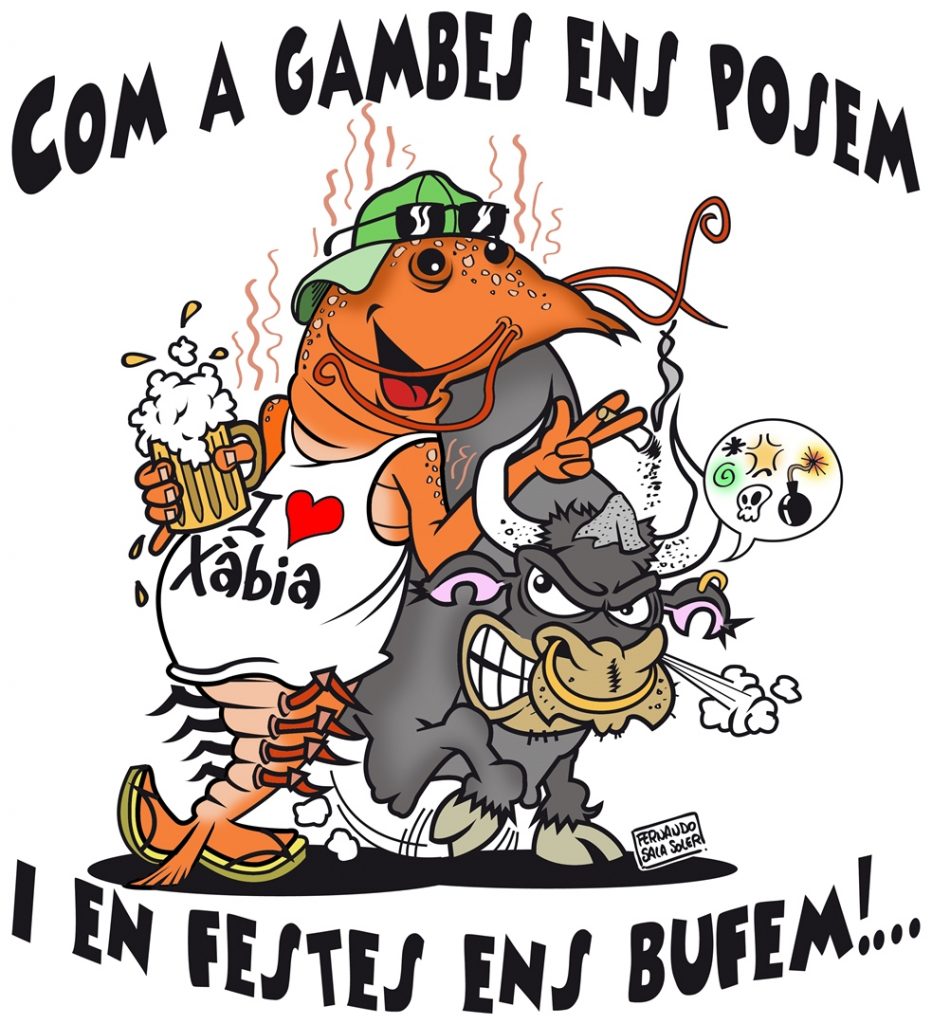
Over the past few years we have shifted from standing on the sidelines to becoming almost fully immersed in the fiesta. We’ve entered the paella competition almost every year, debuting our ‘Paella Desayuno Inglés‘ one year which didn’t win but at the same time didn’t come last (or so we were told by the sympathetic judges). We entered teams into the notorious ‘Birratlon‘, the short race around the historic centre whilst necking beers at designated stops; despite our supposed reputation for being able to drink, it appears we can’t combine it with running!
We’ve joined other penyas for games, lunches, dinners and much more. After the 2019 event, we were invited to join the Comission, the organising committee, to lend our opinions from the point of view of a foreigner. We’re experiencing the other side, the absolute hard work (and, to be fair, sense of fun and camaraderie) of a special group of people from all ages and backgrounds in putting on such a spectacular party.
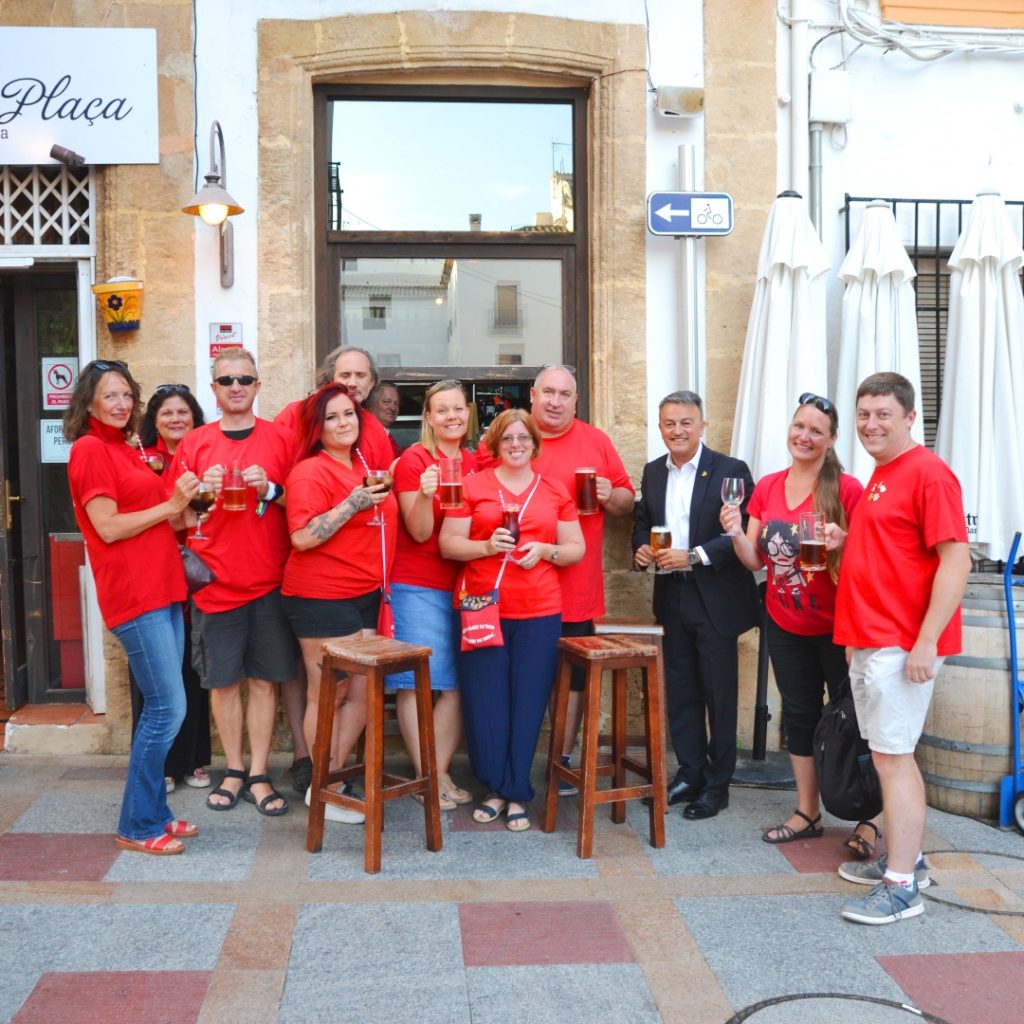
Both the 2020 and 2021 events were cancelled due to the COVID-19 health crisis, but the biggest party in Xàbia returned in 2022 with an extra special edition, celebrated with an unprecedented three quintàs – 2020, 2021, 2022 – whilst Penya Com a Gambes marked its 10th anniversary with a special anniversary lunch and a special day full of music and fun.
We’ve proved that foreigners can become part of the fiesta life in Xàbia. Because, like them, we absolutely love every minute of it.
Just maybe not the casalla …
VISCA XÀBIA I VISQUEN LES FOGUERES DE SANT JOAN!

